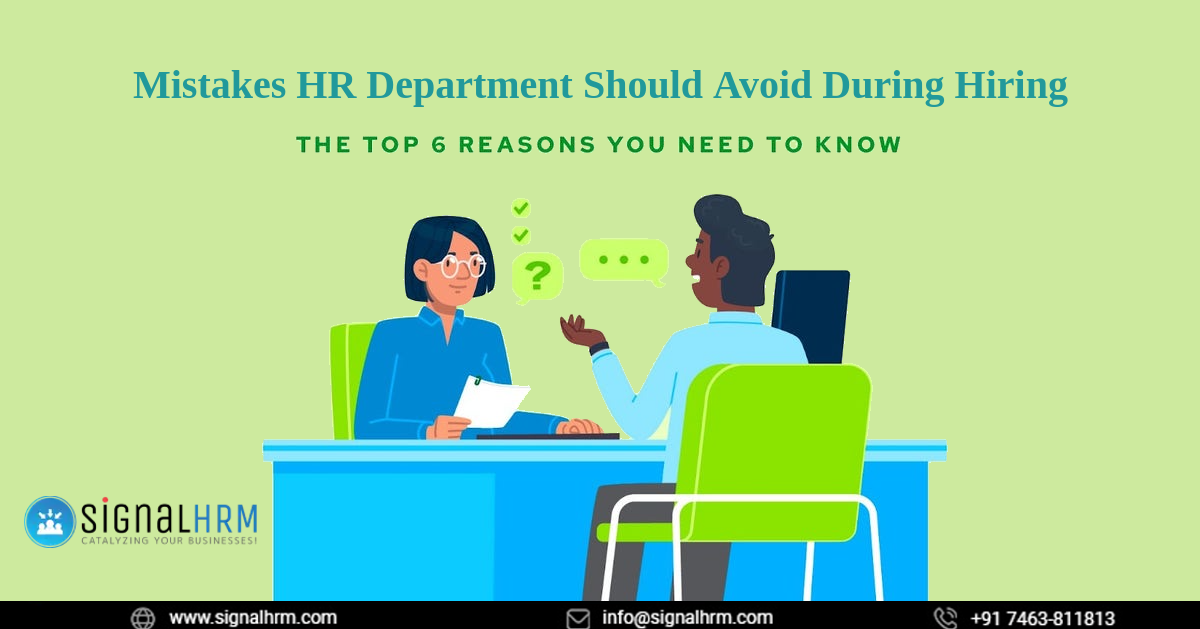
People make an organization. Therefore, organizations need to look after to ensure their well-being and efficient working. It becomes overwhelming for the HR department to choose the right employees, onboard them, and manage them during their tenure. HRs may make some mistakes when they are swamped with a multitude of responsibilities. In this blog, we will find out the common mistakes HRs can make and how they can prevent them.
Lack of HR plan: A concrete HR plan enables organizations to make strategic decisions that push the organization to scale and grow. You can assess staffing needs, find how many human resources are needed, and set up departments, and so on. Arbitrary planning will not produce the desired results.
Lack of proper payroll system: The HRs must integrate a proper payroll system to prevent mistakes such as salary calculations and unfair compensation that may dissatisfy employees. Also, there is a potential scope for other errors such as wrong data, misclassification of employees, and delays in payroll reimbursement. Therefore, organizations must overcome these risks with the help of HRMS management software that has reliable payroll modules.
Improper hiring process: If you are new to HR, the lack of an effective hiring process can be daunting. You may be unsure of where and how to recruit employees. Bad job descriptions and inadequate recruitment processes may result in hiring employees who may not fit well with your company culture.
A successful hiring process contains sufficient information about the type of employees needed and includes the most efficient recruitment methods. Identify necessary skills, predict hiring needs, and decide whether you need contractual or full-time employees. Use HRMS software such as SignalHRM which features robust hiring modules to assist you with the hiring process.
No employee handbook: Many times, HRs tend to ignore an employee handbook. However, a handbook is essential for all types of businesses irrespective of their size. An employee handbook gives a comprehensive understanding of an employee’s code of conduct, outlines specific policies and procedures, and includes employee expectations.
Poor onboarding: At times, the HR department fails to provide a proper onboarding process that significantly impacts the experience and retention of new employees. Proper onboarding starts from the interview stage, extends through orientation, and continues as employees resume their roles. The HR must provide the orientation information and enable the employees to set up their workstations or provide laptops and necessary hardware for remote roles. Make sure you implement all the elements mentioned on the onboarding checklist to welcome employees and make them feel comfortable. The checklist serves as a guide for HR professionals outlining the necessary actions they must take.
Neglecting employee training: Sometimes, the HR managers ignore the training of employees and see it as unnecessary time and cost expenditure. Training employees not only equips them with the necessary skills but also demonstrates their commitment to their growth and development. This cultivates loyalty and a sense of value among employees, improving their satisfaction and lowering turnover rates. Therefore, the HRs must prioritize training and development for a skilled and engaged workforce.
Relying on performance reviews for ratings: Solely depending on ratings for performance reviews is outdated. Organizations nowadays are using agile performance processes to evaluate the performance of their employees. For example, conducting self-assessment, getting peer reviews and manager inputs are essential to assess employee performance.
Conclusion: By following the above tips, the HR departments can reduce the potential pitfalls related to hiring and prevent situations such as hiring inexperienced staff. It is recommended to use HRMS management software such as SignalHRM to ensure seamless HR operations.